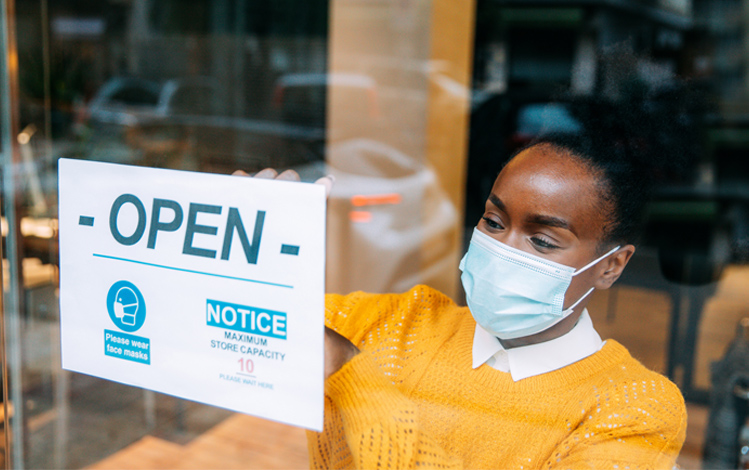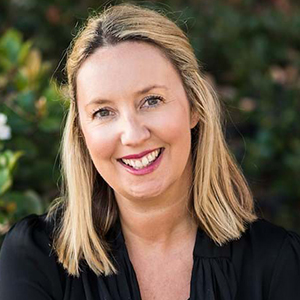

Every Brand Is Now A Health Brand
The pandemic taught us brands should do their part to help consumers in alignment with their purpose.
The big winners at Cannes this summer point the way forward.
Almost overnight, the COVID-19 pandemic changed our lives, and we saw the world unite: Nearly all individuals, governments and brands aligned behind a single goal to “flatten the curve” and prevent COVID-19 hospitalizations and deaths. Of course, scientists and the pharma industry were on the frontlines developing vaccines and treatments, and government response teams rolled them out to the public. But helping people survive required all hands on deck. For many brands outside the pharma industry, this was new territory: Businesses stepped up and took bold steps to create positive action in public health efforts never witnessed in our lifetimes.
We saw countless non-health brands like Qantas, Tinder, AAMI and Heineken launching vaccination campaigns. Even luxury brands like Louis Vuitton and Ferrari helped create hand sanitizer and masks while also helping boost vaccine efforts. And unique partnerships formed around the globe. For example, Australian retail chain Cotton On Group partnered with UNICEF to help deliver 1 million COVID vaccines in developing countries. Efforts big and small helped move communities forward, and we continue to tap our global village to stave off the ongoing and varying impacts of the pandemic. Quite rapidly, all brands became health brands to a certain extent. And the award-winning work featured at the Cannes Lions earlier this summer shows that this isn’t just a moment; it’s a future-focused opportunity for brand relevancy.
This year, I was one of a lucky few from around the world to earn a spot judging the Health & Wellness category—yes, all 300+ award entries. Not only was this an incredible opportunity to see the creative industry’s best campaigns, it was also a chance to see how brands use purpose to set the pace for the future. My top takeaways are instructive of how brands can find creative, results-focused ways to use their purpose to connect with consumers in a health space that’s now greatly expanded.
Health is now everyone's business
As someone who has worked in health marketing for 20+ years, I’m fully aware of how important the sector is in our day-to-day lives. The shocker this year was the number and quality of entries earning Health & Wellness Lions that came from brands outside the health sector. Even more exciting: They were winning awards and the hearts and minds of their audiences.
Groundbreaking work from Harley Davidson’s Tough Turban showed us turbans made with impact-resistant materials for motorcycle riders that respected their traditions. Cox Communication’s Project Convey helped people on the spectrum interpret emotions in our now-dominant video chat reality. Both campaigns received Gold Lions.
LATAM’s retail giant Amaro brought the importance of breast cancer screening to their digital storefront with Virtual Nodule. These are just a few of the award-winning examples that brought a health focus to new territories and ingeniously helped their customers solve problems and connect to needed services.
This is less a trend and more a response to what consumers demand. Recent global research findings from our Brands in Motion study saw 58% of consumers expecting brands to comment frequently on societal issues. I see this as a win-win; anything that increases understanding, advocates change and tackles our current and future health challenges benefits all. Key to this is finding a way to inspire positive impact that connects your brand’s purpose and captures the essence of your brand’s superpowers.
Purpose fueled positive impact for marginalized communities
In my role as a judge, it quickly became clear to me that brands and businesses are leveraging their power for good. In fact, I’d estimate that more than half of the campaigns entered had social impact at their heart. These campaigns weren’t purpose-washing; they were created genuinely to have a positive impact in the world. Many of these purpose campaigns focused on addressing key health challenges in underrepresented communities and provided a voice for those who cannot speak for themselves. One of the Cannes favorites was Dignity to Flow by J&J, which won a Bronze Lion. The campaign destigmatized menstruation and celebrated the right for Brazilian women on the margins, who don’t have easy access to sanitary products, to menstruate safely and with dignity.
Collabs of marketing and product innovation
Product innovation developed in collaboration with brands and their agencies were on full display. Ukrainian smartwatch manufacturer Emwatch challenged the fundamental rule of how time impacts anxiety by creating a time-slowing watch that helps tackle deadline stress. Spice-maker Ankerkraut jumped on the opportunity to bring back the joy of taste to help people who lost this sense through COVID-19 by creating three special spice blends to retrain the sense of taste. What wasn’t always clear was how these campaigns came to be and where the ideas originated. Was it a great product innovation that just naturally became a great marketable, Cannes Lion-worthy campaign? Or vice versa? Either way, does it really matter? A great idea is a great idea. It does, however, give me hope that we marketers can continue to flex our creative muscle way beyond our traditional confines and work together with brands so that the message lands.
Note to brands: Act where you have authority
Brands need to look at health issues important to their audiences where they can legitimately speak about where their actions connect with purpose and demonstrate how they can be a part of the solution.
When deciding what health issue to champion, it can be tempting for brands to go for “high-profile” conditions because they naturally get airtime and impact greater numbers of people. But if you do that, then you’ll be one of many competing for share of voice. Instead, look at the health issues on the rise and examine how they intersect with your teams and your customers. Decide where you can make the most impact that’s true to your purpose.
To be believable, brands must be in it for the long haul. And it’s imperative to do so with authenticity and authority. As brand communicators, we need to become experts in new areas outside our scope. We must learn the lingo. Remember: Health has its own rules and language. This year’s winners at Cannes allowed me to see a more expansive brand connection between businesses and their audiences, and the positive social impact that’s possible when we work together to solve problems. It’s both a creative and innovative opportunity for brands and their partners to work together to tackle the challenges of the day. To me, that’s a great thing. It’s a sign of healing that people crave, and a promise of a more hopeful future for our world in need.
The latest blogs from WE
Decoding Gen Alpha: A Primer on the Next Gen of Consumers
Why Gen Alpha Will Fuel Spending This Season
Why Reputation Is a Business Driver in Healthcare


